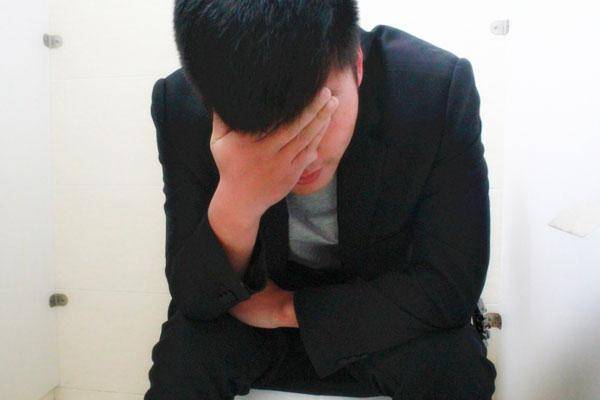When women go to the bathroom, they may find blood coming out, most likely due to their menstrual cycle. Similarly, when men go to the bathroom and notice blood, they may feel anxious and concerned without a clear cause. Today, let’s take a look at the possible reasons for men seeing blood when they use the restroom.
Why do some men experience bleeding when going to the bathroom?
One common reason is an unhealthy diet. Many men enjoy smoking, drinking alcohol, consuming greasy and spicy foods, but often don’t drink enough water. This can lead to dry intestines, hard stools, and difficulty during bowel movements, causing strain and resulting in blood leakage and minor residual blood on the buttocks area. Typically, this doesn’t last long, and as dietary habits normalize and bowel movements become regular, the bleeding stops.
Another possibility is the presence of small ulcers near the anus. Improper handling of constipation or frequent diarrhoea can lead to repeated irritation and pressure on this area, leading to such injuries. Emotional factors can also play a role, as extreme anger or intense emotions may contribute to similar issues. The stool may have a bloody appearance, be bright red in color, leave bloodstains on the buttocks, and cause pain after each bowel movement.
Another common issue that can occur across all age groups is the development of hemorrhoids. Irregular bowel habits, using phones in the bathroom, and aging can contribute to their onset. Once formed, hemorrhoids can be discomforting, making it challenging to sit or sleep peacefully. Bleeding during bowel movements in this case is distinct, often occurring after defecation with a sudden gush, splattering the toilet. The blood does not mix with stool and is clearly separated. To alleviate symptoms, staying active, avoiding prolonged sitting or standing, and using warm water to wash the buttocks nightly, preferably soaking for a few minutes, can help them dissipate.
Issues can also stem from the intestines, where blood might accompany stool as it passes through. This scenario is often linked to the presence of foreign bodies in the intestines, which, as they enlarge, can lead to thinner, blood-streaked stools in a bright red color. During defecation, there might be noticeable pain. It could be due to genetic factors, personal lifestyle choices, bacterial infections, so attention to personal hygiene is crucial.
Furthermore, a critical reason not to overlook is when blood mixes with stool, appearing through mucous adhesions on the stool in dark red or blackish hues, indicating a significant underlying health issue. In such cases, stools may become irregular, alternating between periods of constipation and loose, watery stools, accompanied by abdominal pain during defecation. Unintentional weight loss and other inexplicable signs could signal substantial growths within the intestines.
It’s challenging to gauge internal health solely from external appearances; hence, bodily excretions like stools become an effective means to monitor health. Blood, responsible for nutrient transport within the body, doesn’t ordinarily flow out easily and certainly not together with stool. Therefore, if men observe blood during bowel movements, regardless of the severity of the injury, it warrants attention.


